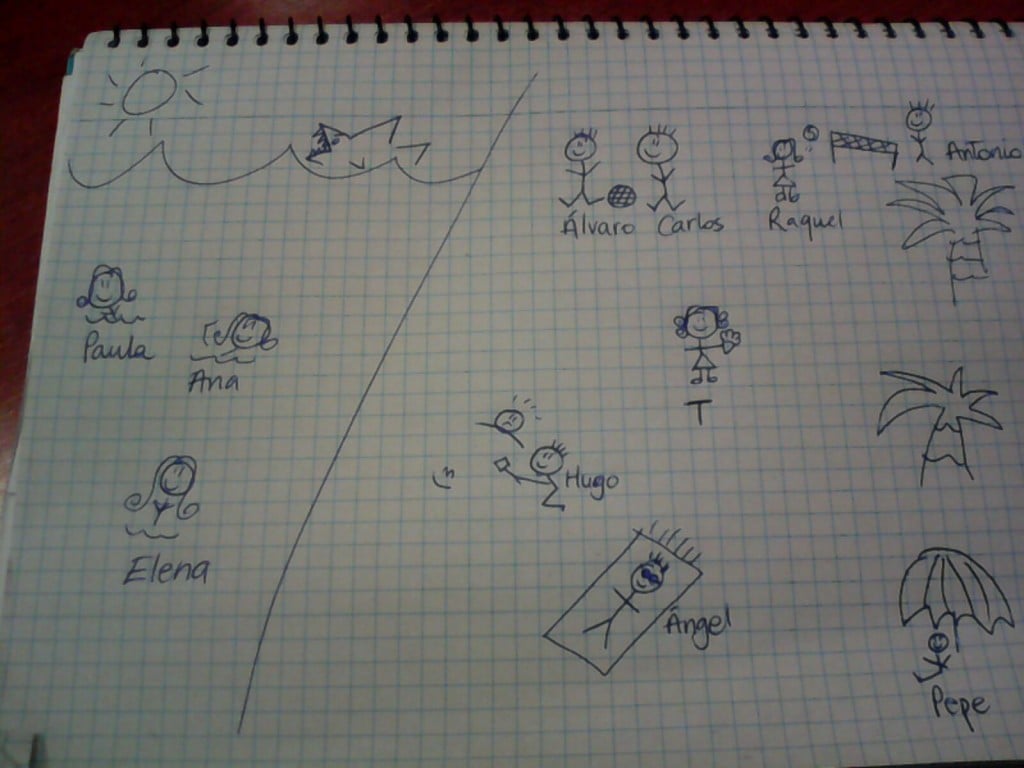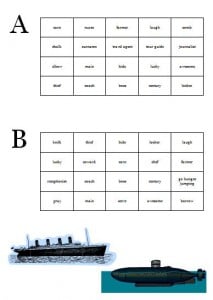Shark Attack…what happened next?
I’ve done the Shark Attack activity recently with a couple of groups and they really enjoy the task – it’s an easy, enjoyable, controlled practice activity of the past continuous. However, I was doing a lesson today with past continuous and past simple and adapted the activity so learners would use both tenses.
The first part of the activity was the same: we brainstormed things to do at the beach and then I told them to draw the beach (I didn’t mention a shark) and then mingle to find out what their classmates were doing. Once we had mingled and done some feedback, I told them to draw the shark and to think about what happened next. There were some very inventive ideas:
Ana and Elena were swimming in the sea. When the shark attacked, they died.
Or alternatively,
Álvaro and Carlos were playing football. When the shark attacked, Álvaro jumped into the sea to save the girls and Carlos called the police.
And even…
Pepe was sitting under an umbrella. When the shark arrived, he saw Pepe and they fell in love and moved to another country.


